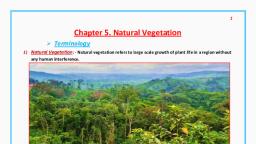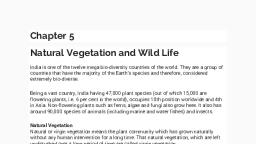Page 1 :
+ Teak, Bamboos, Sal, Shisham, Sandal Wood, Khair. celiac, , + Areas;, , + Eastern part of India Go, , + Northeastern states, , + Foothills of Himalayan J, + Jharkhand, West Bengal, Odisha, and Chhatisgarh_, , “YD YQ ~ J, ZF WY, , YY DRY DECIDUOUS FOREST ad, , Found in rainfall area between 100 to 70 em., Trees:, Teak, sal, peepal, and been, Parts of peninsular plateau, plain areas of Bihar and Uttar Pradesh., The thorny forest and shrubs:, Rainfall was less than 70 cm., Plants:, + Acacias, + Palm, Eupharhias, Thomny trees and bushes, + Animals:, + Lion, rats, tiger, fox, deer, camel, horses, wild ass, rabbit, ‘Trees have the long root and penetrate deep into the soil to get moisture. Ge, Leaves are small and thick to minimize evaporation., , uci, SY YS, Tropical thorny and scrubs Forest Y, , , , , , , , , , In regions with less than 70 cm of rainfall, Found in the north-western part of the country, including semi-arid areas, of Gujarat, Rajasthan, Madhya Pradesh, Chhattisgarh, Uttar Pradesh and, Haryana,, , Main plant's: Acacias, palms, euphorbias and cacti, , Trees are scatteredand have long roots penetrating deep into the soil in, order to get moisture, , The stems aresucculent to conserve water., , Leaves are mostly thick and small to minimise evaporation, , These forests give way to thorn forests and scrubs in arid areas., , , , The commen animals gure 5.5: Thom Forests and Serbs, rats, mice, rabbits, fox, wolf, tiger, lion, wild ass, horses and camels., , ¥~“Y © SA J, , VY WY, —/ MONTANE FOREST Q, , +n mountainous areas, the decrease in temperature with increasing with, height leads to a change in vegetation., , + The succession of natural vegetation belts in the same order as we see, tropical to tundra region., , + 1000 to 2000 meters: wet temperate forest, evergreen broadleaf tree






























































